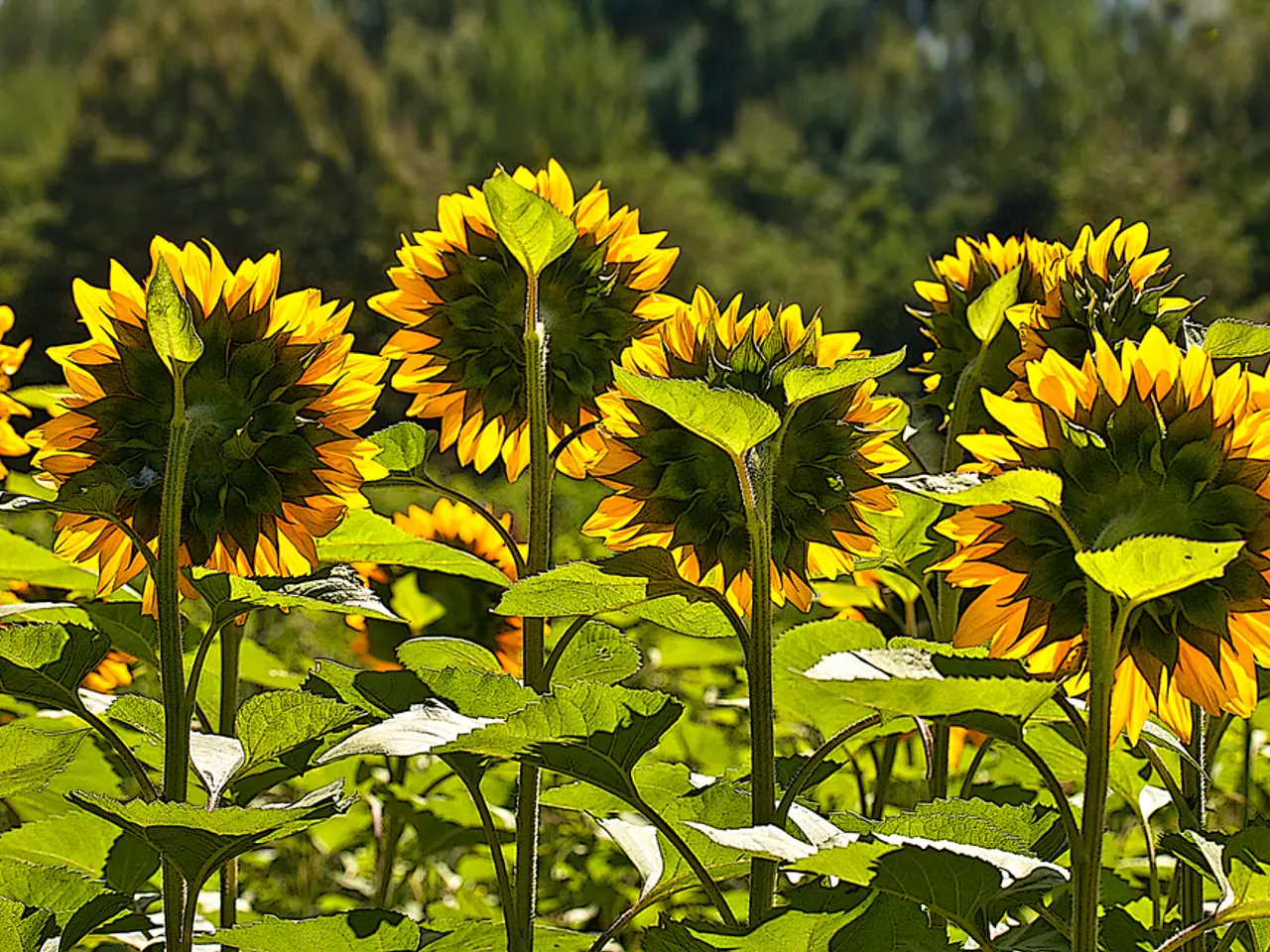Garden Shade Classifications Explained: Understanding Full Sun, Partial Shade, and Deep Shade for Optimal Plant Growth in Your Yard
Garden Shade Explained:
Get your gardening knowledge on point and pick plants like a pro with this low-down on the kinds of garden shade you'll encounter! Whether you're planting up a blooming garden border or styling a flower bed, shade plays a crucial role in determining what'll grow best. Let's break it down!
Full Sun
Go big or go home - that's the motto for plants that crave full sun. Think of spots receiving six or more hours of sunshine each day, particularly places in south-facing gardens that bask in sunlight as the sun moves east to west. Expect plants like Mediterranean gems such as rosemary and lavender to flourish in this environment.
Light Shade
Let history give you a hand: if you've got an enclosed courtyard garden or a compact space, plants that fancy light shade are a solid choice. These spots get indirect sunlight, drenched in natural light yet shying away from those harsh rays of direct sunlight. Hostas, ferns, and heuchera are fans of this type of atmosphere, as are flowering faves like foxgloves, hydrangeas, and camellias. Just beware of dry soil under those walls - choose drought-tolerant varieties like hellebores and euphorbia if the earth is on the drier side.
Partial Shade
Welcome to the in-between: these spots enjoy approximately three to four hours of daily sunlight. Say hello to plants that need some sunlight but can't dance in the sun for too long, like parsley, coriander, mint, and chives. East- and west-facing gardens are often partial-shade champions!
Dappled Shade
Sway and shade, that's the dance in dappled shade - a rhythm created by leaves on deciduous trees, casting dappled light across your humble garden abode. Ideal for plants that shy away from heat and embrace the filtered light, flowering bulbs like bluebells thrive in dappled shade. If you fancy creating your own dappled shade, plant deciduous trees on the south or west side or prune smaller trees to customize your shady sanctuary.
Moderate Shade
We're getting serious now: spots under moderate shade receive merely two to three hours of bright sunlight, ideal for sips of sun without direct, blazing rays. Expect plants like hardy fuchsias, lobelia, and evergreen shrubs like spotted laurel to take root in these conditions.
Deep Shade
If you're grappling with a north-facing garden, especially at the base of walls, or under thick tree canopies, welcome to deep shade - areas blessed with less than two hours of daylight. While these kind-of-challenging spaces offer limitations, you can still bring life and color to them! Embrace shade-loving species such as ivy, pachysandra, ferns, mosses, and even vegetables that tolerate shade.
Now that shade has a friendly face, get your hands dirty and experiment with various species designed for each unique shade zone. Happy planting!
In dappled shade, flowering bulbs like bluebells thrive, ideal for plants that prefer filtered light shied away from harsh, direct rays. For north-facing gardens or spots under thick tree canopies receiving less than two hours of daylight, consider shade-loving species such as ivy, pachysandra, ferns, mosses, and vegetables that tolerate shade for successful planting.








